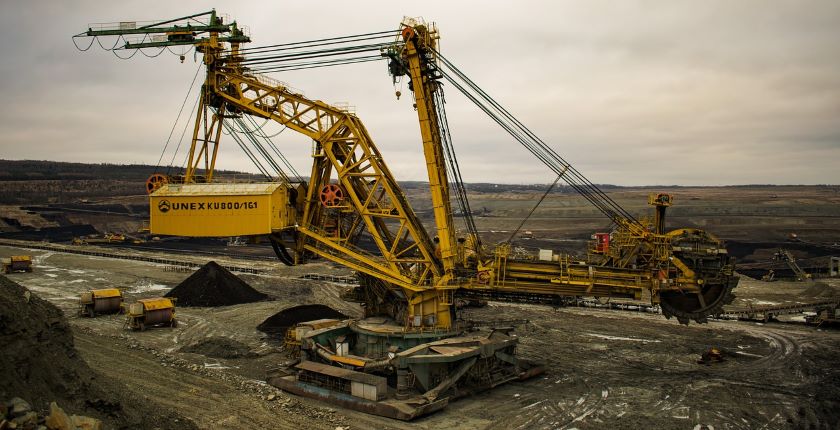
Photo: Mikes1978 from Pixabay
The declines in global coal-fired power generation led to expectations that it reached its maximum in 2018, but with electricity demand outpacing low-carbon supply and with steeply rising natural gas prices, the level is set to jump 9% this year to a record 10.35 PWh, the International Energy Agency said.
Even before the pandemic, coal faced a difficult outlook for 2020. Demand was being squeezed by a mild winter in the Northern Hemisphere, low natural gas prices and strong renewables growth. When electricity demand and natural gas prices plummeted as the COVID-19 crisis escalated, coal-fired plants and demand for their product were severely hit.
In the early months of the crisis, a double-digit annual decline in global coal demand looked plausible. But economic recovery in China came sooner and stronger than initially expected, with year-on-year growth resuming as early as in April.
In contrast to the projection for a record output in coal plants, the fossil fuel’s share in the global power mix is expected to be 36% this year – five percentage points below its 2007 peak
With economic recovery following elsewhere and a cold snap in December in Northeast Asia, global coal demand fell by 4.4% in 2020 – the largest decline in many decades but less than initially expected, the International Energy Agency noted in a new report. The regional disparities were large. Coal demand grew by 1% in China in 2020 but dropped by nearly 20% in the United States and the European Union – and by 8% in India and South Africa.
The declines in global coal-fired power generation in 2019 and 2020 led to expectations that it might have peaked in 2018, but global coal power generation is on course to increase by 9% in 2021 to 10.35 PWh (10,350 TWh) – a new all-time high, IEA estimates. However, coal’s share in the global power mix is expected to be 36% this year – five percentage points below its 2007 peak.
Worrying sign
“Coal is the single-largest source of global carbon emissions, and this year’s historically high level of coal power generation is a worrying sign of how far off track the world is in its efforts to put emissions into decline towards net zero,” IEA’s Executive Director Fatih Birol said.
Demand is still on the rise, IEA stressed
In the US and EU, coal power generation is forecast to increase by almost 20% in 2021 but not to reach the record levels from 2019. By contrast, estimated growth of 12% in India and 9% in China will push coal power generation to record levels in both countries, the organization said.
Taking into account the rebound in global industrial output, overall coal demand worldwide is expected to grow by 6% in 2021, bringing it close to the record levels it reached in 2013 and 2014.
Roles of China, India
China’s power generation, including district heating, accounts for one third of global coal consumption. China’s overall coal use is more than half of the global total. Coal demand in China is underpinned by fast-growing electricity demand and the resilience of the heavy industry.
This is despite a decade of strong and sustained efforts to diversify the country’s power mix – during which China has expanded hydro, wind, solar and nuclear power capacity by more than any other country in the world – and intensive switching from coal to natural gas in the residential heating and light industrial sectors. China is also the world’s largest coal producer and importer, with domestic price swings from supply-demand imbalances immediately impacting international markets.
Beyond 2021, global coal consumption is set to revert to the pattern seen over the previous decade: declines in advanced economies offset by growth in some emerging and developing economies, the document reveals. Global coal trends will be shaped largely by China and India, which account for two-thirds of global coal consumption, despite their efforts to increase renewables and other low-carbon energy sources.
Coal output may reach maximum next year
For most industrial purposes where coal is used, such as iron and steel production, there are not many technologies that can replace it in the short term, according to the IEA. Based on current trends, global coal demand is set to rise to just above eight gigatons in 2022, the highest level ever seen, and to remain there through 2024.
Coal production is forecast to reach an all-time high in 2022 and then plateau as demand flattens, IEA claims.
“The pledges to reach net zero emissions made by many countries, including China and India, should have very strong implications for coal – but these are not yet visible in our near-term forecast, reflecting the major gap between ambitions and action. Japan, Korea and China have also committed to stop public funding for building new coal power projects abroad, severely limiting the possibilities for expanding coal-fired generation in many countries. New commitments during COP26, such as the Global Coal to Clean Power Transition Statement to accelerate the transition from unabated coal power generation, put additional pressure on coal,” according to the report.
Turkey is the biggest coal importer outside of Asia-Pacific
Asia dominates the global coal market, with China accounting for more than half of global demand, or two-thirds if India is added. These two economies – dependent on coal and with a combined population of almost 3 billion people – hold the key to future coal demand, IEA added.
As for the region tracked by Balkan Green Energy News, Turkey is the largest coal importer outside the Asia-Pacific region. But the report highlights expectations that coal demand there and in Australia would decrease slowly as growth in renewable energy output closes in with the gap against electricity demand.









Be the first one to comment on this article.